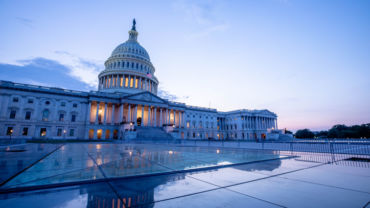The Coronavirus Aid, Relief, and Economic Security Act (CARES Act, PL 116-136) made substantial changes to the Code Sec. 163(j) business interest expense deduction limitation. With all the changes made to the Code in 2020 due to COVID-19, it is worthwhile to review Code Sec. 163(j) both pre- and post-CARES Act changes.
What is the 163(j) limitation?
Code Sec. 163(j) was added by the Tax Cuts and Jobs Act (TCJA, PL 115-97). It limits the amount of business interest expense that a taxpayer can deduct, effective for tax years beginning after December 31, 2017.
For tax years beginning on or after January 1, 2018, Code Sec. 163(j) (prior to being amended by the CARES Act) provided that “business interest expense,” in general, was deductible by a taxpayer only to the extent the deduction was less than 30% of the taxpayer’s adjusted taxable income (ATI). Note that there is, in general, no limit on the amount of “business interest” and “floor plan financing interest expense” that can be deducted.
ATI was defined as EBITDA, that is, net taxable income after adding back interest expense, taxes, depreciation, and amortization.
Excess business interest expense is carried over for an unlimited number of years subject to the same annual limitation by corporate taxpayers, S corporations, and individuals.
How does 163(j) apply to partnerships?
In general, partnerships with excess business interest expense allocate the disallowed interest expense to its partners. The partners then carry those amounts forward and can deduct them only in future years when the same partnership has excess taxable income.
How does the CARES Act affect 163(j)?
The CARES Act makes the deduction limitation less restrictive for 2019 and 2020 in three ways.
- The deduction limit is raised from 30% of ATI to 50% for tax years 2019 and 2020 for all taxpayers except for partnerships. Taxpayers may elect not to apply the 50% limitation to either 2019 or 2020, if they choose. For example, taxpayers, who would have negative impact from a larger interest deduction (such as those facing issues with Code Sec. 59A (Base Erosion and Anti-Abuse Tax, BEAT) and Code Sec. 951A (Global Intangible Low-Taxed Income, GILTI)), may want to use the 30% limit. The election is irrevocable. And it can be made retroactively. Thus, taxpayers who had come up against the 30% limit in 2019 can file an amended 2019 return to apply the 50% limit.
- Taxpayers may elect for tax years beginning in 2020 to utilize their 2019 ATI when computing the 50% limitation. This might be advantageous for taxpayers who saw their 2020 income fall due to the pandemic.
- Regarding partnerships, for 2019, they must use the 30% limitation.
How does a taxpayer elect out of the 50% limit?
A taxpayer can elect out of the 50% ATI limitation for 2019 or 2020 and use the 30% ATI limitation on a timely filed return, including extensions. Rev Proc 2020-22, which discusses the election procedure, provides that no formal statement is required. The election must be made annually for each tax year. A taxpayer can revoke the election by timely filing an amended return using the 50% limit.
For partnerships, the election out of using the 50% limit is made by the partnership and is only available for 2020.
How does a taxpayer elect to use its 2019 ATI for 2020?
The taxpayer makes the election by using 2019 ATI on its timely filed 2020 return, including extensions. The taxpayer can revoke the election by filing a timely amending return that does not use 2019 ATI. The election to use 2019 ATI for 2020 is an election made at the partnership level.
How does the CARES Act affect real estate and farming businesses?
Under the TCJA, real estate and farming businesses could have elected, irrevocably, to be exempted from the 163(j) limitation. The “price” of this election was that those businesses were then required to use the alternative depreciation system (ADS). That means they could not take advantage of the bonus depreciation rules.
Under the CARES Act, these businesses may now withdraw that election.
Rev Proc 2020-22 provides details as to how to withdraw the election.
How do these changes affect state tax law?
Every state has different rules as to whether that state mirrors changes in the federal Code. If a state’s tax code is coupled to the federal Code, then, generally, the CARES Act amendments would apply on the state level too.
But whether a state is always coupled to the Code can be dynamic. For example, New York had conformed to the changes made by the TCJA to Code Sec. 163(j), i.e., the business interest expense deduction in New York was limited to 30% of ATI. But, in April 2020, New York passed a law that said the it was specifically decoupling from the CARES Act provision increasing the interest expense deduction limitation from 30% to 50%. As a result, for New York purposes, the business interest expense deduction limitation continues to be limited to 30% of federal ATI for tax years ending in 2019 and 2020.
Bottom line. The CARES Act changes to Code Sec. 163(j) provide relief for taxpayers on the federal and, perhaps even, the state level. But because some of the 163(j) elections carry a price, careful planning is important.
Continue your research on 163(j) and the CARES Act on Checkpoint Edge. Experience a free demo now.
About the Author. Michael Sonnenblick currently serves as a Senior Editor for Thomson Reuters Checkpoint. In addition to writing for Checkpoint Federal Tax Update, Michael is frequently quoted in the press. Michael holds a J.D. degree from Boston University School of Law and an LL.M. in Taxation from New York University Law School. A member of the New York Bar, he has over 20 years of tax experience, including service with a major Wall Street bank and international law firms. In addition, he has represented clients before the IRS.







